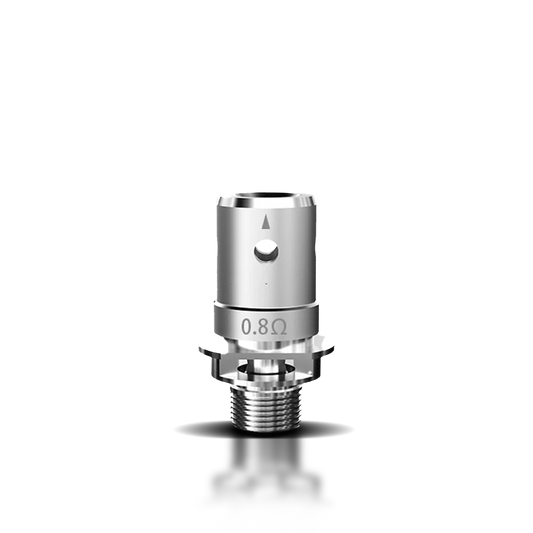
Passive vaping: myth, risk or media scare?
Every smoker is familiar with the warnings about second hand smoke. For decades, the evidence has been clear, breathing in other people’s cigarette smoke is harmful, increasing risks of cancer, heart disease and respiratory illness. With vaping, however, the debate takes a different turn. Headlines warn about passive vaping, some claim it is just as bad as second hand smoke, while others dismiss it as pure hysteria. So, is passive vaping a myth, a real risk, or another media scare designed to spark outrage? Let us cut through the noise and look at what science actually tells us.
What is passive vaping?
Passive vaping, sometimes called second hand vapour, refers to breathing in aerosol exhaled by someone using an e cigarette. Unlike cigarette smoke, which is created by combustion, vapour is produced by heating e liquid into an aerosol. It looks similar, which is why comparisons are so often made, but the chemical makeup is entirely different. Smoke contains tar, carbon monoxide and thousands of toxins, vapour does not. Yet because vapour looks like smoke, many assume the risks are identical. This assumption fuels the myth of passive vaping.
What studies have found
Dozens of studies have tested the composition of exhaled vapour. The consistent finding is that levels of harmful substances are extremely low, often so low they are indistinguishable from normal background air. While nicotine can sometimes be detected in enclosed spaces, it is in tiny amounts compared with cigarette smoke. Public Health England, Cancer Research UK and the Royal College of Physicians all agree, there is no evidence that passive vaping poses a significant health risk to bystanders. That does not mean zero risk, but it does mean the scare stories exaggerate far beyond the evidence.
Why the myth persists
If the science is so clear, why does the fear of passive vaping persist? The answer lies in optics and perception. Vapour looks like smoke, and smoke is associated with harm. Media outlets play on this association, using images of thick clouds to suggest danger. Campaigners who oppose vaping seize on the visual similarity to claim that vaping recreates the harms of smoking. Fear is easy to spread, nuance is harder. The phrase passive vaping has stuck because it sounds alarming, not because it is supported by evidence.
Comparing passive smoking and passive vaping
The contrast could not be starker. Cigarette smoke contains more than 70 known carcinogens, while vapour contains far fewer chemicals, mostly propylene glycol, vegetable glycerine, flavourings and nicotine. The key difference is combustion. Burning tobacco releases toxic by products, while vaping does not. When studies measure indoor air quality, cigarette smoke causes harmful spikes in particulate matter, carbon monoxide and toxins. Vapour does not. To equate the two is misleading. Passive smoking is a proven killer, passive vaping is not.
Concerns about children and non smokers
Opponents of vaping often raise concerns about children or non smokers being exposed to vapour. While the evidence shows minimal risk, this does not mean vaping should be allowed everywhere. Respect for others matters. Just as you would not blast music in a quiet café, vaping in crowded indoor spaces can be inconsiderate. Many workplaces and public venues ban vaping indoors, not because of proven danger, but to maintain comfort and social norms. Harm reduction does not mean ignoring courtesy. It means recognising where risks are low but also respecting how others perceive them.
Passive vaping and the role of nicotine
Nicotine is often the focus of concern. It is addictive, which is why it hooks smokers, but it is not the primary cause of smoking related disease. While trace levels of nicotine can be found in second hand vapour, they are far lower than in cigarette smoke. The exposure from sitting near a vaper is negligible, nowhere near enough to create dependence or harm. Yet media stories often highlight nicotine as if its mere presence makes passive vaping a serious health issue. The reality does not back that up.
Policy debates and passive vaping
The myth of passive vaping often plays into political debates. Calls to restrict flavours, ban disposable vapes or impose harsher taxes sometimes invoke the idea of protecting bystanders from vapour. This is a tactic, not an evidence based argument. Harm reduction experts warn that equating passive vaping with passive smoking risks confusing the public, making smokers think switching has no real benefit. When myths dominate policy, harm reduction suffers. Accurate communication is vital to avoid sending smokers the wrong message.
The psychology of media scares
Passive vaping fits perfectly into the media’s formula for a scare story. It takes a visual cue that looks familiar, attaches a fearful phrase, and presents it as a hidden danger. Just like popcorn lung or gateway theories, passive vaping has become part of the anti vaping playbook. For readers who do not have the time to dig into research, the message is simple, if it looks like smoke, it must be bad. Breaking that cycle requires not only evidence, but also bold communication that challenges lazy narratives.
Why myth busting matters
Myth busting is not just an intellectual exercise. It has real consequences. Smokers who believe that passive vaping is as harmful as second hand smoke may decide there is no point switching. Parents who fear exposing children to vapour may discourage their smoking relatives from switching to a safer option. Misinformation creates barriers to harm reduction. By addressing these myths head on, vapers and health advocates can support informed choices and highlight the real differences between smoke and vapour.
Practical safety and courtesy
Even though the risks are minimal, vapers can take steps to address concerns and be considerate. Avoid vaping in confined spaces with non vapers, especially children. Use lower wattage settings indoors to reduce visible vapour. Choose nicotine salts or discreet pod systems for public settings instead of cloud chasing rigs. Courtesy builds social acceptance and prevents unnecessary conflict. Harm reduction is about both science and behaviour, and the vaping community can lead by example.
Final thoughts
So, is passive vaping a myth, a risk or a media scare? The evidence is clear. It is a scare, fuelled by optics and fear rather than science. Unlike passive smoking, which is a proven killer, passive vaping shows no meaningful risk to bystanders. That does not mean vapers should ignore courtesy, but it does mean the public deserves honesty. Misinformation helps nobody. Harm reduction works best when people understand the real risks and benefits, not when myths dominate the conversation. It is time to challenge the passive vaping scare and focus on facts.
Join the conversation and explore more
Have you had someone warn you about passive vaping? Share this article, start a conversation and help replace fear with evidence.
Want to explore safer alternatives to smoking? Visit Vape Lounge UK. Check out our wide range of e liquids, shortfills, devices and accessories. Whether you are looking for disposables, nicotine salts or refillable kits, we have something to suit every style.
If you would rather speak to us face to face, come and visit our shops. Find us at 147 Great Ancoats Street, Manchester M4 6DH or 71 Stafford Street, Stoke on Trent, ST1 1LW. You can also email us at hello@vapelounge.uk or call 0161 637 6066. We are here to help you switch, stay safe and enjoy vaping with confidence.






